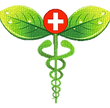NAC : N-Acetylcysteine
- Dr Adele Pelteret - Naturopath

- Nov 1, 2021
- 2 min read
Updated: Apr 11, 2023
#N_acetylcysteine or #NAC is an amino acid that stimulates the biosynthesis of #glutathione (GSH) - a key #antioxidant produced in the body. It also modulates glutamatergic, neurotrophic, and inflammatory pathways.
Glutathione plays an important role in protecting the body against oxidative stress and supporting healthy #LiverDetoxification processes.
NAC has been used for decades in clinical settings, as a #mucolytic and to treat paracetamol/acetaminophen overdose. The mucolytic action: NAC is able to break the disulphide bridges in the high-molecular-weight glycoproteins of mucus, resulting in reduced viscosity. Acetaminophen poisoning: NAC is able to replenish hepatic reduced glutathione (GSH). NAC has diverse clinical applications which are linked to its ability to support the body's antioxidant and nitric oxide systems during stress, infections, toxic assault, and inflammatory conditions.
CLINICAL USES
NAC has been reviewed previously, in many different clinical conditions, including:
Cancers - prevention and treatment
Lung diseases
Cardiovascular diseases
Gastrointestinal diseases
NAC has been widely used in different gastrointestinal clinical conditions, including in cases of infection by Helicobacter pylori, colon cancer, and inflammatory bowel diseases (IBDs).
Liver diseases and dysfunction
Evidence from experimental studies has revealed that NAC blocks the accumulation of liver lipids and reduces proinflammatory markers, such as:
IL-6 and IL-1β, TNF-α, and NF-κB
Acetaminophen-induced liver toxicity
HIV infections
Kidney diseases
Infectious diseases
Hepatitis B
Pulmonary TB
Chorioamnionitis
Acute pyelonephritis
Metal toxicity
Inflammatory disorders:
Chronic blepharitis
Intrauterine inflammation
Neurodegenerative diseases - some include:
Spinocerebellar disease (SCD)
Myoclonus epilepsy of the Unverricht–Lundbor type (ULD)
Alzheimer’s disease (AD)
Parkinson’s disease (PD)
Tardive dyskinesia (TD)
Down’s syndrome (DS)
Traumatic brain injury
Psychiatric diseases - some include:
Methamphetamine and Cannabis dependence
Nicotine and cocaine addiction
Pathological gambling
OCD
Trichotillomania, nail biting and skin picking
Schizophrenia
Bipolar disorder
Autism and AD
Male fertility
Sickle cell anaemia
Pre-eclampsia
Metabolic syndrome
Chronic blepharitis
Meibomian gland dysfunction
The ability of NAC to restore thiol proteins and in particular mercapto-albumin in plasma is an interesting mechanism and needs to be studied further.

The wide application of NAC is not only because of its well-described antioxidant and radical scavenging activity but also because, as a thiol molecule, it is quite stable and commercially available at a fairly low price.
DOSAGE:
NAC is generally safe and well tolerated even at high doses. The most frequently reported side effects are nausea, vomiting, and diarrhoea. Therefore, oral administration is contraindicated in persons with active peptic ulcer.
Common oral dose = 600mg/day as a mucolytic, and in a nebulized format in patients with acute bronchopulmonary disease:
pneumonia
bronchitis
tracheobronchitis
At higher doses (≥1200mg), NAC also acts as an antioxidant through complex mechanisms which can combat conditions of oxidative stress.
*NOTE: please consult directly with your health provider and do not self-medicate!
CAUTION:
NAC strongly potentiates the effect of nitroglycerin and related medications. In rare circumstances, intravenous administration of NAC can lead to an allergic reaction generally in the form of rash or angioedema.
SOURCES:
R. Bavarsad Shahripour et al. (2013) N-acetylcysteine (NAC) in neurological disorders: mechanisms of action and therapeutic opportunities. Brain and Behavior, 4(2): 108–122
Giancarlo Aldini et al. (2018) N-Acetylcysteine as an antioxidant and disulphide breaking agent: the reasons why. Free Radical Research, 52(7): 751-762
Tenório MCdS, Graciliano NG, Moura FA, Oliveira ACMd, Goulart MOF. (2021) N-Acetylcysteine (NAC): Impacts on Human Health. Antioxidants, 10(6): 967
Shi, Z., & Puyo, C. A. (2020). N-Acetylcysteine to Combat COVID-19: An Evidence Review. Therapeutics and Clinical Risk Management, 16: 1047–1055
.png)














Comments